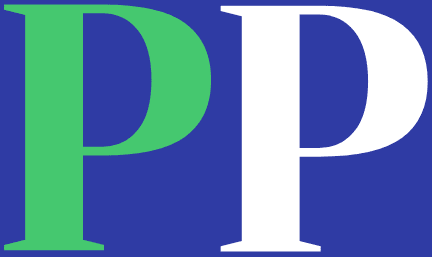Last updated Mar. 18, 2025 by Charles Zemub
The indispensable role that nurses play in the healthcare industry is indisputable. Whether working in hospitals, clinics, or community centers, they provide critical care and support to patients worldwide. Yet, despite their significant contributions, many nurses face the daunting challenge of repaying substantial student loans accrued during their nursing education. Fortunately, several programs are available to help nurses achieve student loan forgiveness. This article explores how nurses can get their student loans forgiven, detailing various programs, eligibility requirements, and practical tips for navigating the forgiveness process.
Understanding Student Loan Forgiveness
Student loan forgiveness is a financial relief option in which a portion or all of a borrower’s student debt is forgiven, excusing them from further repayment. Several federal and state programs are explicitly designed for nurses, recognizing their public service contributions and offering assistance in alleviating their financial burdens.
Public Service Loan Forgiveness (PSLF)
Program Overview:
The Public Service Loan Forgiveness (PSLF) program offers one of the most well-known routes for student loan forgiveness. Established by the U.S. Department of Education, PSLF forgives the remaining balance on Direct Loans after the borrower has made 120 qualifying monthly payments under a qualifying repayment plan while working full-time for a qualifying employer.
Eligibility Requirements:
- Employer: Nurses must work for a government organization, nonprofit organization, or another qualifying employer.
- Loan Type: Only loans under the Direct Loan Program are eligible for forgiveness.
- Payments: Borrowers must make 120 qualifying monthly payments under plans such as Income-Based Repayment or Pay As You Earn.
- Employment: Full-time employment is required, typically constituted as working at least 30 hours per week.
Steps to Apply:
- Employment Certification: Submit the PSLF Employment Certification Form annually or whenever changing jobs.
- Make Payments: Ensure payments are made under a qualifying repayment plan.
- Submit Application: After making 120 payments, submit the PSLF application.
Nurse Corps Loan Repayment Program
Program Overview:
The Nurse Corps Loan Repayment Program offers nurses the opportunity to have up to 60% of their unpaid nursing education debt forgiven in exchange for a two-year service commitment at a critical shortage facility or eligible nursing school.
Eligibility Requirements:
- Employment: Work as an RN or APRN in a designated Health Professional Shortage Area (HPSA) or serve as a nurse faculty member at an accredited school of nursing.
- License: Hold a degree in nursing and a current, full, permanent, and unrestricted license.
Benefits:
- Forgiveness Amount: Up to 60% of unpaid nursing debt for a two-year service commitment, with an optional third year for an additional 25%.
- Additional Benefits: Competitive salaries, paid leave, and health insurance.
State-Based Loan Forgiveness Programs
Several states offer programs tailored to address specific regional nursing shortages. These programs might offer full or partial loan forgiveness in exchange for service in defined critical areas.
Examples Include:
- California State Loan Repayment Program: Offers loan repayment assistance for nurses serving in designated areas with healthcare shortages.
- New York State Nursing Faculty Loan Forgiveness Incentive Program: Provides loan forgiveness for registered nurses who hold a master’s degree and work as nursing instructors.
Eligibility Requirements:
- Typically require commitment to work in high-need areas within the state.
- License and degree requirements similar to federal programs.
Strategies for Obtaining Loan Forgiveness
Successfully navigating the path to loan forgiveness includes understanding the eligibility criteria, maintaining accurate records, and staying updated with program changes.
Tips for Maximizing Loan Forgiveness Opportunities
- Verify Loan Type: Ensure loans fall under eligible categories, such as Direct Loans.
- Understand Program Details: Stay informed about specific program requirements and updates.
- Complete Annual Certifications: Regularly submit necessary documentation to verify employment and payments.
- Seek Professional Guidance: Consult with financial advisors or loan servicers if you have questions.
- Maintain Full-Time Employment: Consistently keep up with work-hour requirements and necessary certifications or licenses.
✓ Short Answer
Nurses can achieve student loan forgiveness through multiple programs such as Public Service Loan Forgiveness (PSLF), which forgives debt after 120 monthly payments under a qualifying plan while working for a qualifying employer. The Nurse Corps Loan Repayment Program offers loan repayment for working in critical shortage areas. State programs offer additional incentives. To maximize these opportunities, nurses should verify loan types, understand program requirements, regularly certify employment, seek professional advice, and maintain full-time qualified employment. These strategies ensure that nurses can effectively lessen their financial burdens while continuing to contribute significantly to healthcare.
FAQs
Q1: How long does it take to qualify for PSLF?
- A: Nurses can qualify for PSLF after making 120 monthly qualifying payments, often taking approximately ten years.
Q2: What types of nursing jobs qualify for forgiveness programs?
- A: Jobs at government organizations, nonprofits, or facilities with critical shortages typically qualify for forgiveness programs. Examples include working in hospitals, public health departments, and community clinics.
Q3: Can part-time nurses qualify for loan forgiveness programs?
- A: Most programs require full-time employment; however, part-time work may qualify if it meets specific criteria, such as combining multiple part-time positions under a single employer.
Q4: Is private student loan debt eligible for forgiveness?
- A: Generally, private student loans do not qualify for federal or state forgiveness programs. Considering refinancing may be a viable option for those with private loans.
Q5: How can I track my progress toward loan forgiveness?
- A: Utilize tools like the National Student Loan Data System (NSLDS) for tracking payment history and ensure all certifications and documentation are up to date with your loan servicer.





